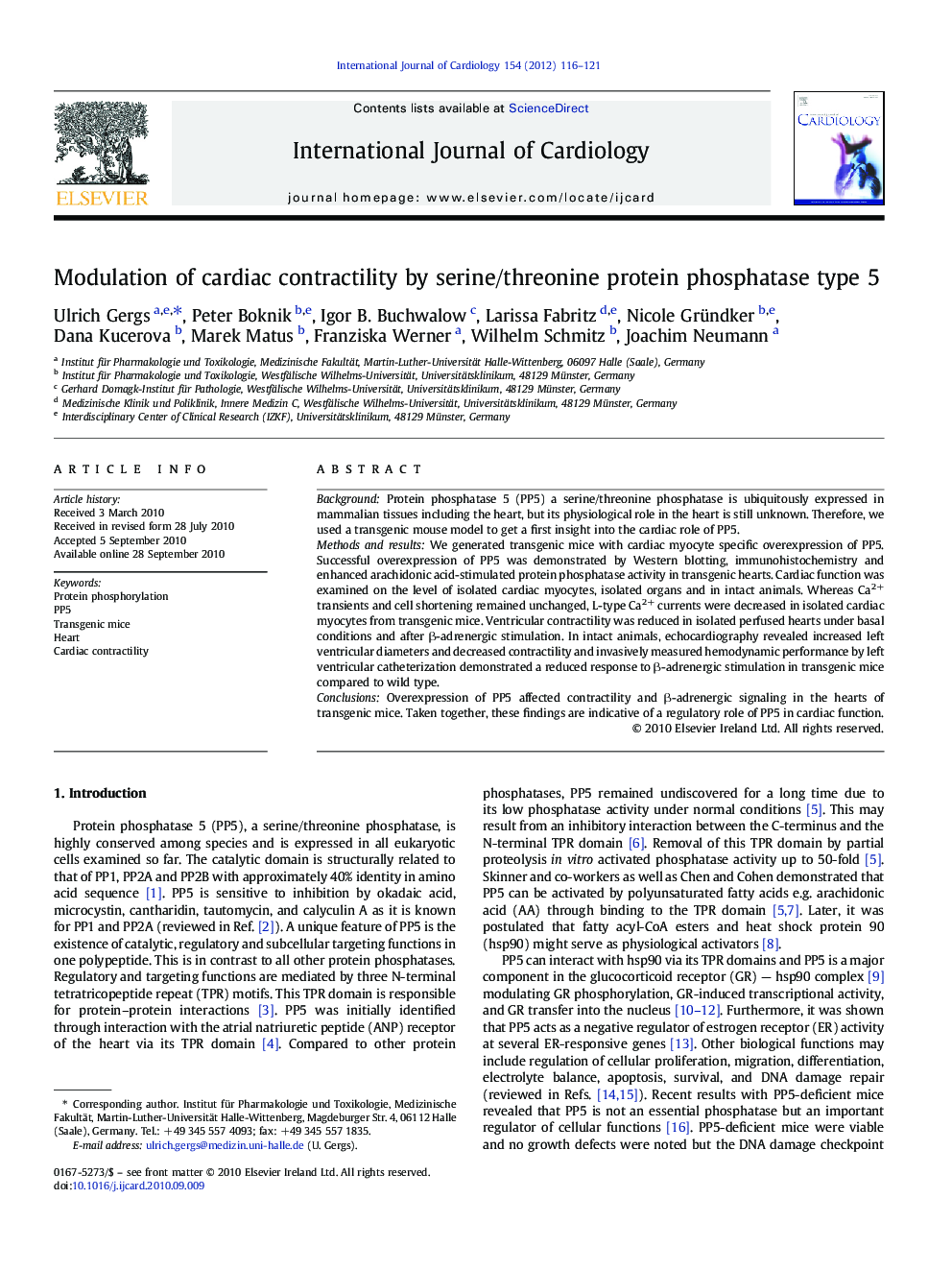| Article ID | Journal | Published Year | Pages | File Type |
|---|---|---|---|---|
| 5977779 | International Journal of Cardiology | 2012 | 6 Pages |
BackgroundProtein phosphatase 5 (PP5) a serine/threonine phosphatase is ubiquitously expressed in mammalian tissues including the heart, but its physiological role in the heart is still unknown. Therefore, we used a transgenic mouse model to get a first insight into the cardiac role of PP5.Methods and resultsWe generated transgenic mice with cardiac myocyte specific overexpression of PP5. Successful overexpression of PP5 was demonstrated by Western blotting, immunohistochemistry and enhanced arachidonic acid-stimulated protein phosphatase activity in transgenic hearts. Cardiac function was examined on the level of isolated cardiac myocytes, isolated organs and in intact animals. Whereas Ca2+ transients and cell shortening remained unchanged, L-type Ca2+ currents were decreased in isolated cardiac myocytes from transgenic mice. Ventricular contractility was reduced in isolated perfused hearts under basal conditions and after β-adrenergic stimulation. In intact animals, echocardiography revealed increased left ventricular diameters and decreased contractility and invasively measured hemodynamic performance by left ventricular catheterization demonstrated a reduced response to β-adrenergic stimulation in transgenic mice compared to wild type.ConclusionsOverexpression of PP5 affected contractility and β-adrenergic signaling in the hearts of transgenic mice. Taken together, these findings are indicative of a regulatory role of PP5 in cardiac function.
